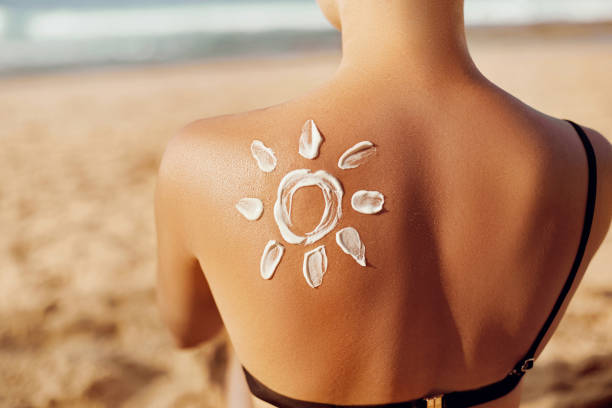
How Does Sunscreen Work to Protect Your Skin?
Rain or shine, winter is a season that sunscreens are a must. Men and women should apply SPF 50 sunscreen to prevent sun damage, including sunburn, tanning, and premature ageing. Sunscreens function like a magnificent screen door that protects the skin from the sun. Sunscreens block UV light rays and help block the sun’s UVB rays, which are believed to cause sunburn.
Types of Sunscreens
Sunscreens are used to protect the skin from UV rays. They come in two varieties: physical, which block certain types of light, and chemical-based sunblocks that absorb UVA radiation.
Chemical Sunscreens
To protect your skin from the adverse effects of UV rays, chemical or organic sunscreens form a thin protective film that absorbs all incoming radiation before it penetrates into our cells.
Physical Sunscreens
Physical sunscreens protect your skin by just sitting on top of your skin and basically reflects the UVA rays and UVB rays away from the skin.
What Should You Use?
Physical sunscreens usually don’t result in stinging, itching, or allergic responses. But sometimes, they are white and oily. Typically, the chemical sunscreen chemicals are transparent and simple to use. But these are more likely to irritate people and trigger allergies.
What does SPF Mean?
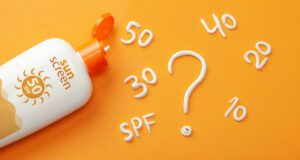
The term “SPF” stands for Sun Protection Factor and is followed by a number (such as 15, 30, or 50) that compares the time it would take for skin to burn in the presence of SPF to the time it would take for skin to burn in the absence of SPF. When a product has an SPF of 50, the skin will burn during sun exposure 50 times slower than when it doesn’t. Look for the word “wide spectrum” on the box to confirm the product also protects against UVA rays since the SPF number only pertains to the protection given against UVB rays.
Active Ingredients VS Inactive Ingredients
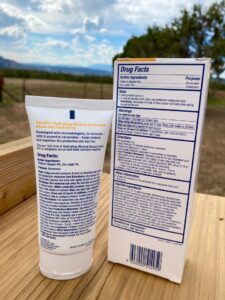
Inactive and active ingredients are both included in sunscreen. Lotions, oils, and water are among the sunscreen’s inactive components; they serve as the glue that holds the sunscreen’s elements together. The UV rays filters in sunscreen truly shield your skin from the sun.
Physical sunscreen and chemical sunscreen are distinguished by their active components. Avobenzone, octinoxate, and oxybenzone are some of the chemical sunscreens’ active components. The active ingredients in physical sunscreen are either titanium dioxide or zinc oxide. Physical sunscreens inherently offer UVA and UVB protection since they are broad-spectrum products. However, oxybenzone, which is what will filter both UVA and UVB rays, should be included in any chemical sunscreen you choose to use.
Why do you need it? How does it work for you?
Sunscreen is essential to ensure optimum sun protection. It helps to keep your skin a little warmer during the summer months. It can help decrease the risk of skin cancer and skin pre-cancers. Daily exposure to sunscreen at least three times a year significantly reduces melanoma risk. Help reduce premature ageing caused by sunlight.
How Does Sunscreen Works?
UV rays are blocked and absorbed by sunscreen using a mix of chemical and physical particles. UV light from the skin is reflected using physical particles like zinc oxide and titanium dioxide. Before the radiation penetrates the skin, complex chemical components in sunscreen react with it, absorbing the rays and releasing the energy as heat.
To battle UVB and UVA rays, combining UV radiation’s blocking and absorption is crucial. The primary cause of sunburn and skin cancer is UVB radiation. On the other hand, UVA rays entered the skin more deeply and were previously believed to cause skin ageing and wrinkles.
Recent studies have shown that UVA radiation is also significant in the growth of skin cancer. However, many sunscreens on the market include UVB-blocking chemicals, offering insufficient defence against UVA radiation’s damaging wavelengths.
The sun protection factor, or SPF, is another aspect of sunscreen. It is frequently misunderstood to be the level of protection. It relates to how much longer UVB rays take to cause the skin to get red when sunscreen is worn instead of not. For instance, a product with an SPF of 15 will prevent skin burning 15 times slower than it would if it weren’t for the product.
So that you may better enjoy your time outside search for a sunscreen that provides SPF 15 or higher and delivers UVA and UVB protection.
How to use sunscreen?
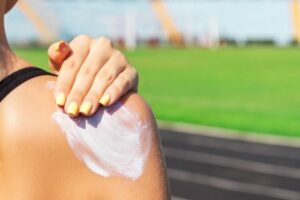
For complete protection, you must use sunscreens. Sunscreens can be helpful for many reasons. Sunscreen helps prevent sunburn, reduces skin cancer risk, and prevents premature skin ageing. It is not possible to simply use sunscreen. You must wear sunscreen with good sunscreen protection. Skin Cancer Foundation recommends using sunscreen with more than 30 SPF at all times. Applying sunscreen for about 20 minutes before you go outdoors is best.
Choosing sunscreen: What to look for?
Broad spectrum: Protection against harmful UVB rays. SPF15 is a good sanitiser for occasional daily exposure, such as walking the dogs or the bus. Look to our everyday use seals for recommended SPF 30 or higher. Required for prolonged outdoor activities such as walking and swimming. SPF30 is necessary to get outdoor work done safely. Check our active recommendations page. The best water resistance for swimming or undergoing vigorous exercises. Getting waterproof is impossible unless there’s a washing process on them all.
When should I apply sunscreen?
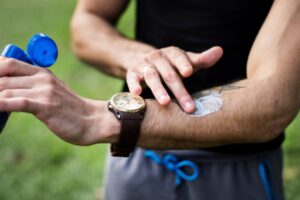
All the time? Applying the sunscreen 30 seconds before leaving the house will give the sun a firmer grip on the skin. Apply twice a day to the skin during swimming or excessive sweating. Even during the cloudier conditions, up to 80 per cent reflects sunlight into the atmosphere. Unprotecting yourself during rainy weather can cause blemishes.
What kind of sunscreen should you use?
Tell me the best way to find a sunscreen that suits your needs. A dermatologist recommends that a sunscreen with a maximum SPF of 15 is best for skin cancer patients. Find out which option is suitable for your situation. The happier you are with the sunscreen, the better it works out.
Broadspectrum protection
The new broad spectral sunscreens provide detailed warnings on product labels for protection against UVB and UVA from the two types of rays that cause burn: sunburns (UV radiation) and more severe ageing effects like age spots.
What Affects Your Photosensitivity
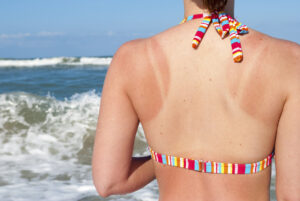
Age, skin tone, and the time of year you spend outside are just a few variables that affect your skin’s sensitivity to sunlight (or “photosensitivity”).
Age
As you age, your skin becomes harder to repair, and UV damage can affect the deeper connective tissue over time. Thanks for this breakdown in elastin tendon development may start showing through as wrinkles or lines on our faces!
This breakdown applies to everyone, not just those who spend most of their waking hours outdoors. In actuality, most sun exposure occurs incidentally throughout the day, including those brief periods when we venture outside without sunscreen, such as while running to the shop or strolling from your car to the workplace.
These 5-minute periods without protection can accumulate over a lifetime and may end up doing more harm to our skin than beach days in the summer, when sunscreen is more liberally applied. No matter what your day has in store, apply sunscreen every morning.
Climate
The climate in your area affects how likely you are to get sun damage. If you live in a sunny spot, you’re more likely to suffer sun damage than in a cloudy area. Taking steps to protect yourself from the sun, like wearing sunscreen and staying in the shade, can help reduce your risk of sun damage. The best way to avoid sun damage is by wearing sunscreen. Understanding how it works will help you understand the dangers of UV exposure and make an informed decision on what kind might be right for your needs. The UVI (UltraViolet) Index tells us about expected levels in different parts on any given day, ranging from 0 – 11, where zero means low risk and eleven high chances.
Skin Tone
Your UV sensitivity and risk of developing skin cancer are significantly influenced by your skin colour. Everyone’s skin may be damaged by the sun’s rays, but those with ashen skin are more susceptible to sunburn because they are more sensitive to ultraviolet radiation. In contrast, people with darker skin pigment are less vulnerable to the sun’s rays and seldom, if ever, get sunburns.
The beautiful skin colour of people with darker complexions is due to a higher number of melanocytes, cells producing black or brown hairs. These pigment-containing structures help protect them from sunburns, while lighter shades can get burnt easily in the hot summer months because they don’t have as many protection mechanisms against these harmful UV rays.
Conclusion
Sunscreen protects your skin against the sun’s harmful UV rays. It is essential to find a sunscreen that suits your needs, as different people have different sensitivities to sunlight. An individual’s climate and skin tone also affect how likely they are to suffer from sun damage. Sunscreen should be applied every morning, no matter what the day has in store. Wearing sunscreen and staying in the shade can help reduce your risk of sun damage. Sunscreen is a lotion, spray, gel, or other substance on your skin to protect it from its ultraviolet (UV) rays.UV rays can cause skin cancer, premature ageing, and other problems.
Last Updated on
- How Does Sunscreen Work to Protect Your Skin? - August 24, 2022
- How Sunscreen is Made - August 24, 2022
- How to Fix a Wobbly Ceiling Fan - August 19, 2022
